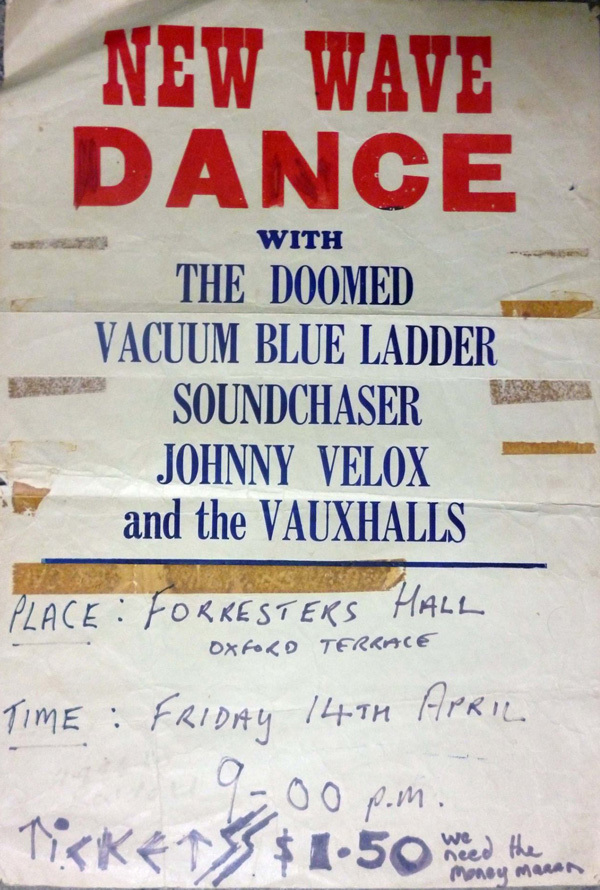
It was a full 20 minutes before The Doomed realised their gangly abrasive singer wasn’t coming back. Grinding to the end of an obscure cover song from an even more obscure band they told themselves, “He’ll be back.” It was all just a part of the act. It wasn’t as if he hadn’t walked offstage in the middle of a song before.
Manic wild-haired Dick Driver, long since established as Johnny Abort, punk vocalist around town, had heard about Iggy Pop and his crowd-hassling offstage prowl, but the rest was pure Johnny – jamming a mike down his trousers, feigning an epileptic fit onstage and rolling around the rickety Mollett Street venue floor screaming out The Doomed’s antisocial anthems – ‘Social Disease’, ‘Angry Young Man’ and other songs about “masturbating and being a loser.”
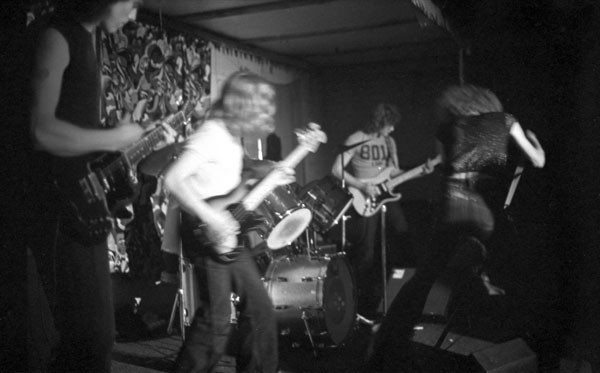
Outside in the cool August air, Johnny Abort kept on walking, turning his back on the intimate hedonistic Mollett Street market venue in Christchurch and its patchwork crowd of young punks, counterculture survivors and Garden City oddballs.
He’d grown tired of the whole punk rock thing. Mollett Street was changing. It seemed like it wasn’t their scene anymore – familiar faces were getting lost in the crowd.
Driver returned to racing motorcycles for kicks and driving a council truck, where he was in early 1977 before Ian Costello’s phone call stirred him from his post-adolescent torpor. Back when he was just plain Dick Driver, hoon from Hornby.
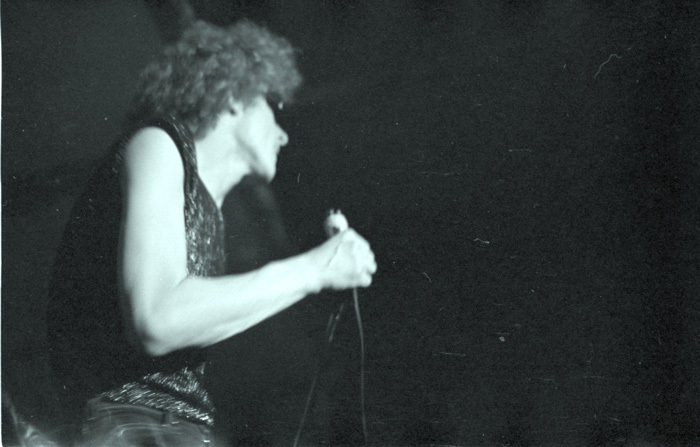
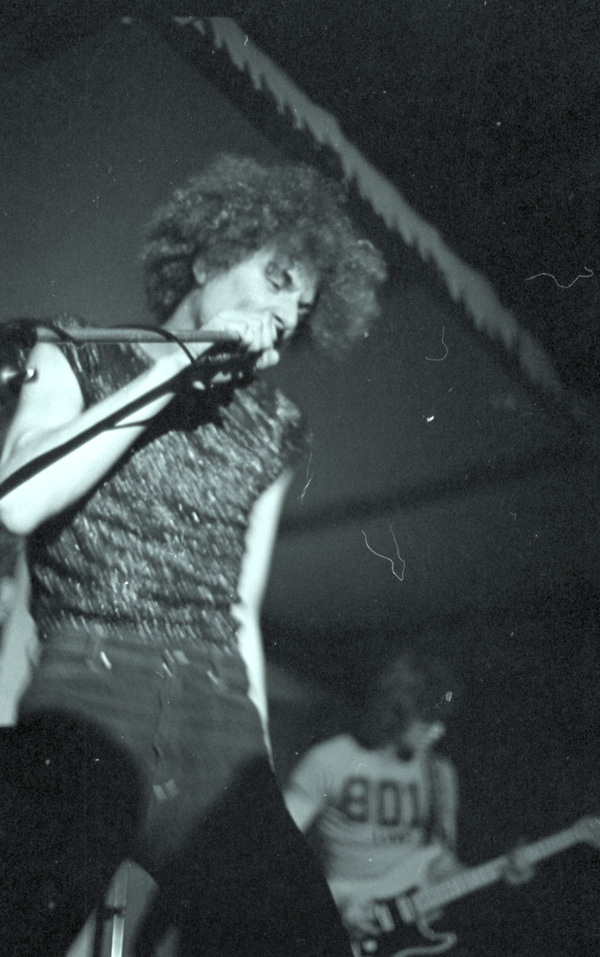
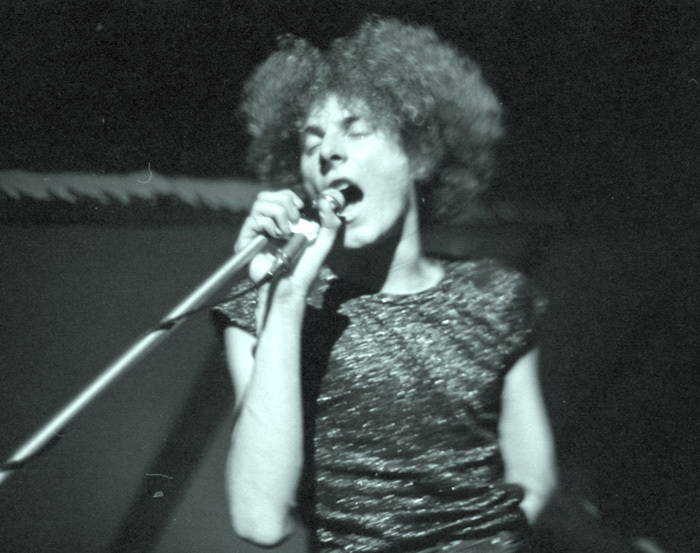
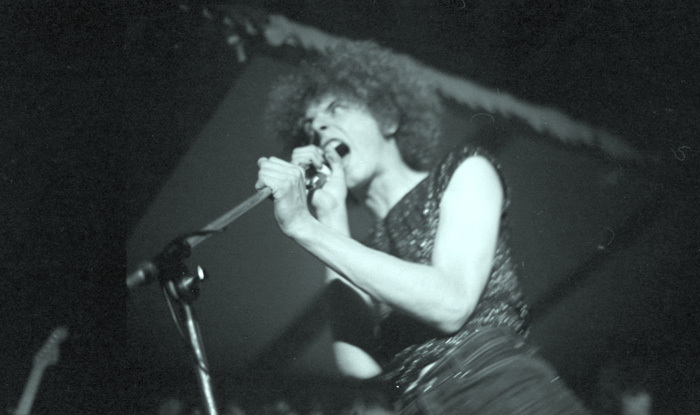
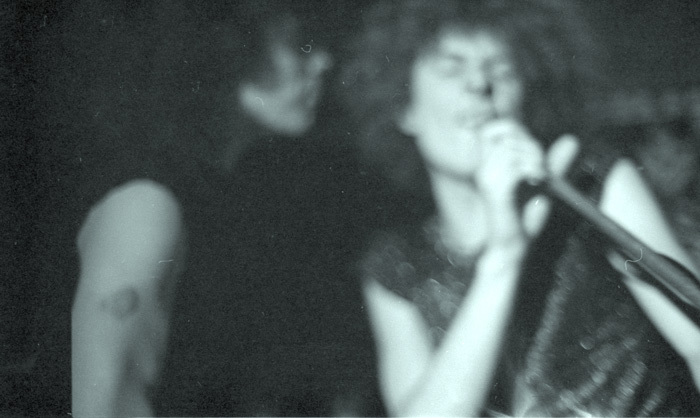
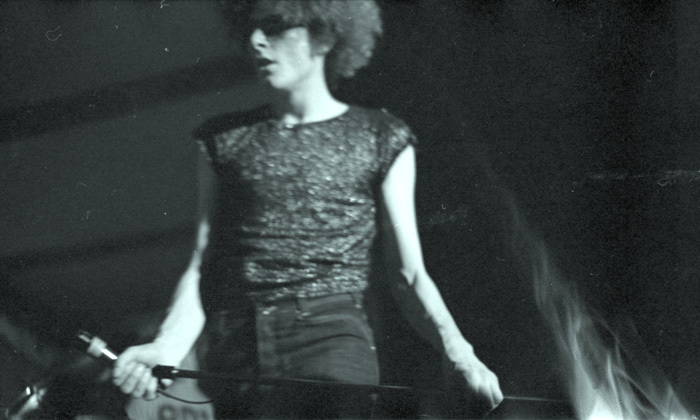
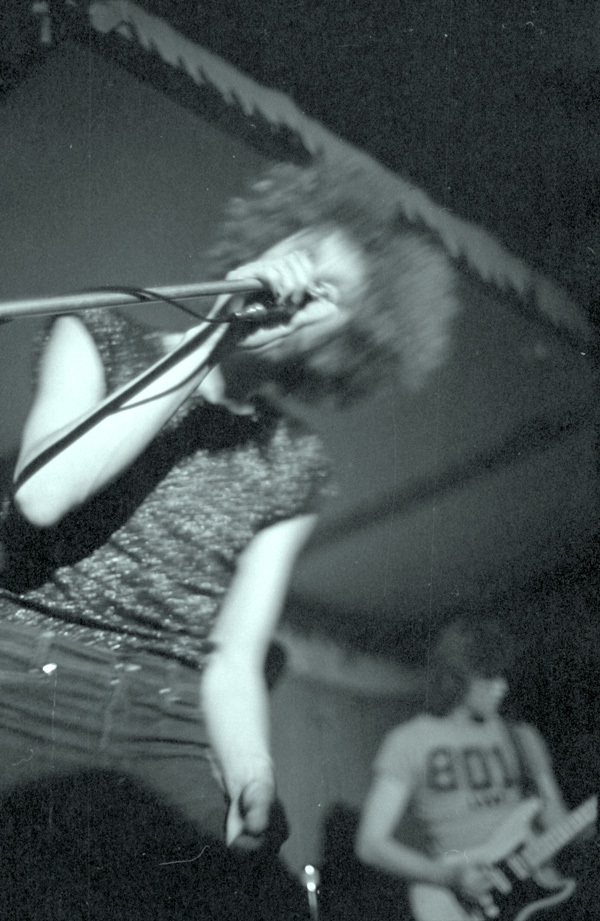
A sequence of shots taken by Stuart Page of The Doomed at Mollett Street, Sunday 25 July 1978. Aside from Dick Driver, who is prominent in these images, The Doomed were Tony Millar (drums), Ian Costello (guitar) and Pete McKelvie (bass). - Photos by Stuart Page
Costello was fired up by Dylan Taite’s infamous Sex Pistols piece on television. He wanted to form a punk group with the flamboyant, extroverted Driver as vocalist. Dick started turning up at the practice sessions with Costello and his bass player mate Pete McKelvie at Rolleston Hall, joined by drummer Tony Miller (punk name Les Percussions). Together they ground out the new R&B and punk of The Sex Pistols, Buzzcocks, Johnny Moped and Wire.
An audience existed in a disused market place in Mollet Street off Colombo Street.
They called themselves The Doomed and found others were mining the same musical turf. An audience existed in a disused marketplace in Mollett Street off Colombo Street where they played their first show and spent most of their musical life.
When Al Park, a wiry would-be Keith Richards, first mooted the idea of a club where he and his friends could hang out and his fast R&B group Vapour and The Trails could practise, he had no idea the ratty club they named Club da Rox would become the incubator for Christchurch punk.
Park had been schooled in Naenae in the Hutt Valley near Wellington, one of New Zealand’s 1960s R&B heartlands, where he saw The Roadrunners, The Bitter End and The Dead Things perform. Their sets were littered with Rolling Stones numbers and recent developers of the genre in Johnny Thunders, Eddie and The Hot Rods, Elvis Costello and early New York punk.
Vapour and the Trails were a blast of unpretentious R&B-based rock and roll, echoing the hard return that various London groups had made to the sound in the mid-1970s.
Al Park: “We played Mollett Street every second Sunday then weekly. It was our place. It didn’t mean other bands were eliminated. Everyone got to play there. We weren’t especially punk, but the band was very intense. Murray Olds was a natural manic drummer, hard and ultra-fast. The two guitarists were Blair Allchurch, who left as Mollett St ended, and Terry Molloy, a placid little guy, but an exciting guitar player. He’d been a classical guitarist and played with Ragnarok.”
Over time Ian Whitehead (vocals), Terry Bird (bass) and Leigh Perry (guitar) all passed through the group.
Ian Costello was at their first show. “The sound was raw and rough, but everyone could dance to it. Just imagine how The Beatles sounded in The Cavern – hot, sweaty, loud and rough around the edges – a bit out of time. I told Al Park, if your band can do it so can mine.”
By the end of the year, all the early Christchurch punk bands were playing there. Johnny Velox and The Vauxhalls were a teenage four-piece from Burnside High comprising vocalist Johnny Velox (real name Mike Williams), guitarist Kid Buick (Mark Brooks), bass player Eugene Dipstick (Scott Brooks), and Dick Distant (Finlay Calderwood) on drums. They played songs by The Velvet Underground and The Who, with Mark Brooks turning out an ever-increasing number of originals.
Mark Brooks: “The turning point came in 1977 when we watched Dylan Taite’s piece on TV about The Sex Pistols and the early punk rumblings from the United Kingdom. Dave McKenzie – our number one fan – and myself were both big fans of Dr. Feelgood and would spend hours working out how to play their songs by listening to their LPs.
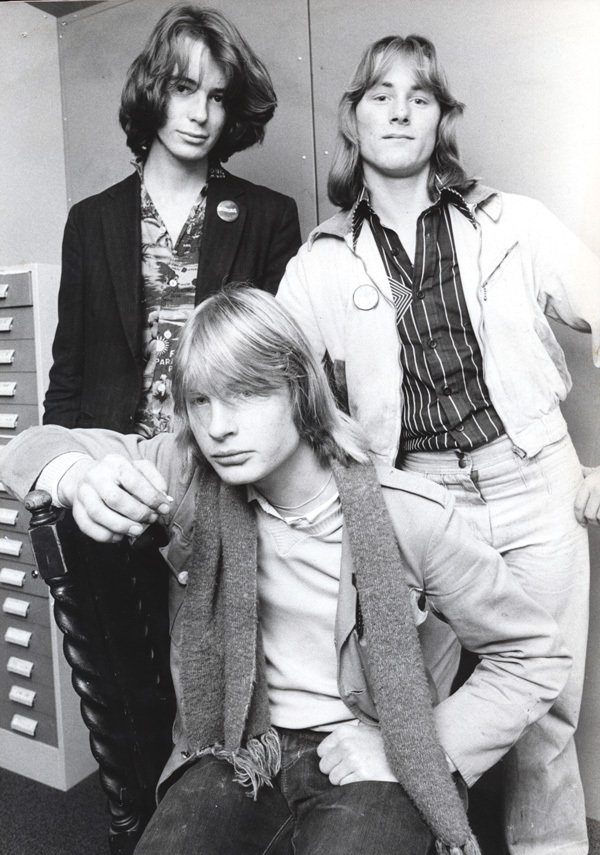
The Vauxhalls: Mark Brooks, Martin Archbold, Scott Brooks.
“Punk rock was even better as we suddenly realised we didn’t need to be great musicians in order to perform in front of people. I met Mike [Williams] through David McKenzie who attended Christchurch Boys High with him. Mike caused a bit of controversy at the school as he dyed his hair red and behaved in a pretty camp sort of manner. He was writing arty lyrics inspired by Bowie, Roxy Music and Iggy and I was starting to write tunes to go with his words. Dave had bought Live at the Roxy and the first Damned LP, which were huge inspirations to us.
“We scored a gig playing to girls from a Christchurch Borstal, which was a real buzz. The organisers called it off after the girls set fire to the bushes outside. Inside, we were playing The MC5’s ‘Motor City Is Burning’ as smoke filled the hall!
“After school, Scott and I regularly hung out at the record counter of the University Bookshop, which was run by Tony Peake, an Aussie, a few years our senior. One afternoon Tony told us of a new club that had just opened in the city in a lane way off Colombo St. It wasn’t really a club at all, more like a few rooms above a leather shop with a homemade stage and a single toilet, which rarely flushed.
“He set up a meeting with the guy who ran the club, a wild-eyed Keith Richard lookalike named Al Park, who played rhythm guitar in a highly energetic R&B band called Vapour and the Trails. Christchurch bands seemed to have a thing for naming themselves after V words: Vauxhalls, Vandals, Vapour and the Trails, Vibes, Victor Dimisch Band, Vacuum Blue Ladder.
“We played our short set to a room full of long hairs smoking dope, and a small group of our fans leaping up and down in front of the stage. We had started to gain a small following of enthusiastic fans. We were soon a regular feature at Mollett Street, often playing before notable North Island bands like Citizen Band or Rough Justice. We would live for every second Sunday when the club would open.
“The Sunday night bill on a typical night might feature Al’s group Vapour and The Trails, a folk singer, a prog rock group and us playing our own two-minute songs and a few sped-up Who covers. This attracted a pretty diverse crowd of hippies, students and a few punk rockers eager for some Sunday night entertainment, as nothing else was open. There would always be a queue around the corner and up Colombo Street clutching the obligatory two-dollar cover charge.”
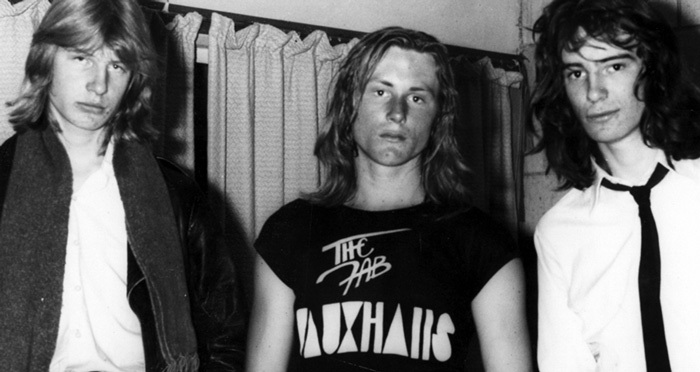
The Vauxhalls: Martin Archbold, Scott Brooks, Mark Brooks
Cue February 12 1978. Mollett Street is packed. The floor is shaking with the dancing. In the heaving mass, a woman is dancing topless, people around her locked into the moment, moving as one. The less mobile are gathered in bunches around the venue’s edges and lounging on couches in the hot, sweaty interior. Young punks, hippies, left-of-centre refugees – the whole weird strand.
Earlier in the evening the Vacuum Blue Ladder appeared fronted by Bill Direen with future Terminals Stephen Cogle and Peter “Buck” Stapleton (on drums) with Peter Fryer on keyboards and violin. Fryer was dislodged for an unlikely pair – Alan Meek (organ) and tall, bearded Tony O’Grady (guitar) came from support act European Son.
Half their early set consisted of songs off Nuggets, the pioneering collection of American sixties garage punk, and psych. The rest came from the bulging Direen songbook including ‘Love In The Retail Trade’ (recorded with Keith Robbins at Robbins Recording Studio in 1978) and ‘Remember Breaking Up’ and ‘Inside’ (recorded by a later lineup of The Vacuum with a young John Markie, AKA Jon Segovia, on bass).
In March 1978, The Doomed, Johnny Velox and the Vauxhalls, and The Vandals played Dracula’s Wedding Party (horrible and outrageous dress essential) at Canterbury University.
Pioneering Dunedin punks The Enemy ventured north in late April for electric shows at Canterbury University and Mollett Street. Park: “The real thing. All original songs. They did two sets and slowly drew us into their wildness. At the university, Knox was really going for it. There wasn’t anyone who liked them there. They were instantly hated by the crowd – bottles were flying and being broken. Knox was rolling around in it and cut himself. He was sitting up on the bass amp taunting people who were throwing things at him. He had that manic Chris Knox grin. He was into it, loving what was going on.”
At Mollett Street, there were lines down the street, and people climbing drainpipes. Inside Knox performed his masochistic sideshow, smashing a bottle against the brick window surround and slashing his arms. Not deep, but enough to turn stomachs.
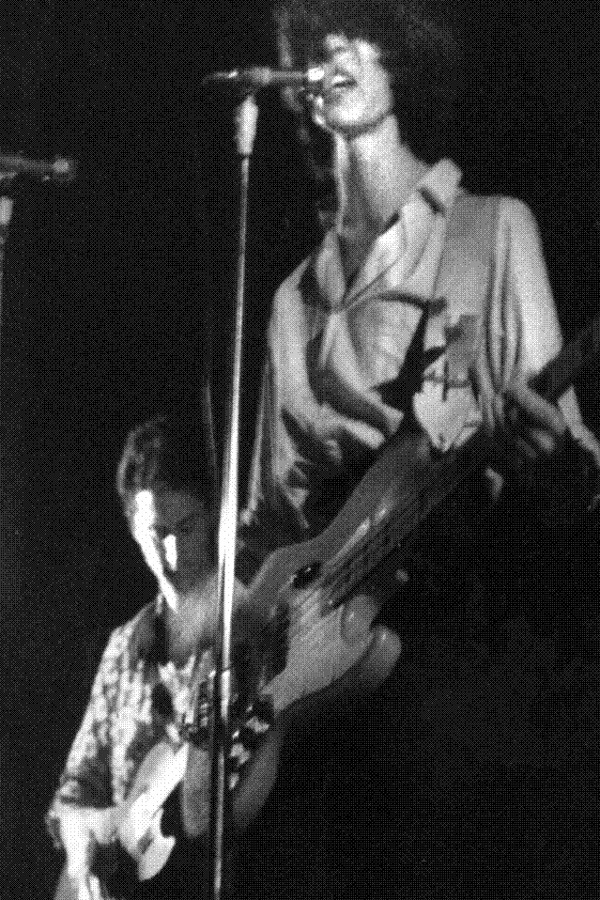
The Vauxhalls
The Enemy were back in Christchurch in early July with The Clean in tow. They hooked up with The Vauxhalls and The Doomed for shows at Mollett Street and the Foresters’ Hall in Avonside. “It was a major event, says Dick Driver. “The two big punk acts from Dunedin and Christchurch. It got us out of that R&B, vaudeville, burlesque Mollett Street thing. The Clean weren’t really good then but The Enemy were awesome and intimidating.”
In September 1978 The Vauxhalls – with new drummer Martin Archbold but minus Johnny Velox – travelled to Dunedin for The Enemy’s farewell show at the Beneficiaries Hall on Maori Hill before leaving for Auckland and eventual fame as Toy Love.
Mark Brooks: “We had played a wild show at the University in July 1978 with The Doomed and The Vandals, and met The Enemy (from Dunedin), who invited us to come down south, and play shows with them. The night before we left, Mike had his friend Paul Johns (Christchurch’s answer to Andy Warhol) phone me, and tell me Mike was still grounded by his folks, and would not be coming with us, as he had to study for his University Entrance exams. Scott and I went into panic mode as we not only didn’t have a singer, we had recently lost Findlay and replaced him with Martin Archbold, who had only rehearsed with us once and didn’t know any of our songs!”
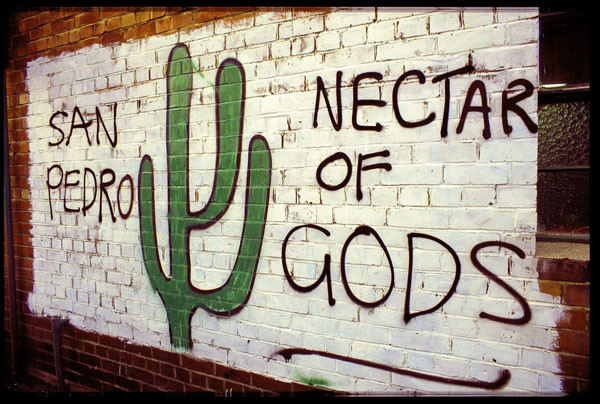
Stu Kawowski's graffiti on the wall outside Mollett Street - Photo by Stuart Page
"The First thing Enemy singer Chris Knox did was come up and say ‘nice shirt’ then he opened my shirt up and spat on me."
– Martin Archbold
Martin Archbold: “We arrived on the bus at midnight wearing dark glasses. The first thing Enemy singer Chris Knox did was come up and say ‘nice shirt’ then he opened my shirt up and spat on me. There was no till at the hall so they put the money in a teapot, which got stolen. The bands didn’t get paid.”
Mark Brooks: “We stayed with Chris Knox and The Enemy at their tumbledown mansion in Lachlan Ave. I remember rehearsing in Chris’ kitchen with Martin tapping out the drum parts on a breadboard and nervously being driven to a packed Coronation Hall for our first gig as a three-piece.
“First up were a new band, The Clean, who were christened by Knox that afternoon because they looked, well … clean! The band was made up of friends of The Enemy and fronted by Enemy roadie Doug Hood. They had this terrific anti-music stance even to the point of de-tuning their guitars before the show.
“We were next up. I was now promoted to singer and guitarist. With the aid of the words written on large bits of paper and plenty of Speights beer, we played a pretty energetic set to a very responsive and vocal crowd. Luckily the police arrived to close the show down halfway through our set, just as I began to lose my voice! On the bus trip back home we mutinied and decided Mike was out. The Vauxhalls would remain a three-piece band. A few weeks later Rip It Up published a review of the show and gave us the thumbs up. We must have been doing something right.”
Mollett Street closed in December 1978 with a final all-star show. The club’s best groups were ready to take the next step. Vapour and the Trails secured a residency at the DB Gladstone in the inner city.
Park: “When we auditioned for The Gladstone, we packed it out for three nights. First week there was 1,100 people, second week 1,300 people. We got the gig, but we couldn’t play every week so I volunteered to book it.”
With The Vauxhalls and other Mollett Street groups in support, Vapour and the Trails were playing to crowds of four to five hundred fans each night.
Mark Brooks: “Alan Park somehow talked Ray who managed the Gladstone into letting Vapour and the Trails play there every week. He saw there was an ever-growing audience. By making a central city pub his new venue, he really took it to another level. He needed a few more groups to fill the evening, and although Street of Flowers played support the first weekend The Vauxhalls became the regular support band. We were always getting in trouble with Alan for not pacing ourselves and sometimes racing through our forty-five-minute set in thirty minutes. That meant the Trails had to go on earlier and play some of their shittier material.
“Before the pubs, all the bands we associated with were always playing privately organised shows and little illegal clubs. Once we got into the pubs it changed the whole scene. Suddenly we were all legit. We were a proper band.
“The crowds at The Gladstone were initially made up of Mollett St regulars and curious punters, but soon we were playing to crowds of people we hadn’t seen before. Sometimes it got pretty violent as the Gladstone was a heavy gang pub when Al Park started to book it.
“The pubs had been filled with fairly competent R&B bands, boogie bands and blues groups. Vapour and the Trails and The Vauxhalls must have been like something from another planet to someone out of the Mollett Street loop! It was just so primitive! We pretty much worked out how to play and perform in front of people at the Gladstone.
“Scott and Martin were still underage and often hid when the cops did an underage bust on the Gladstone. Scott climbed over a barbed wire fence to escape the law one night. But Suzanne Prentice was busted in Otago for playing in pubs aged fifteen and suddenly the law was changed. We could now legally play in a pub as long as we didn’t consume any alcohol. It was bad enough getting changed in a dressing room with the Trails blowing fog-like amounts of jazz woodbines.”
The Vauxhalls picked up a manager, Phil Brennan, who booked The Strand, a club that started in early 1979 at the Redcliffs Community Centre underwritten by 3ZM, then moved to the Mount Pleasant Community Hall and finally to a “shoebox” in St Asaph Street in the city.
Phil Brennan: “The Vauxhalls were more like The Jam than a punk band. A stylish band. Scott had long hair. Bass down real low. Martin worked really hard. He had jazz training. Mark and Scott were six foot. They wore white shirts and skinny ties. Then different coloured jeans – Scott (yellow), Martin (green) and Mark (blue) – and black T-shirts with the fab Vauxhalls on.”
Believing The Vauxhalls were overexposed in their Gladstone support, Brennan booked them to play in Timaru, south of Christchurch.
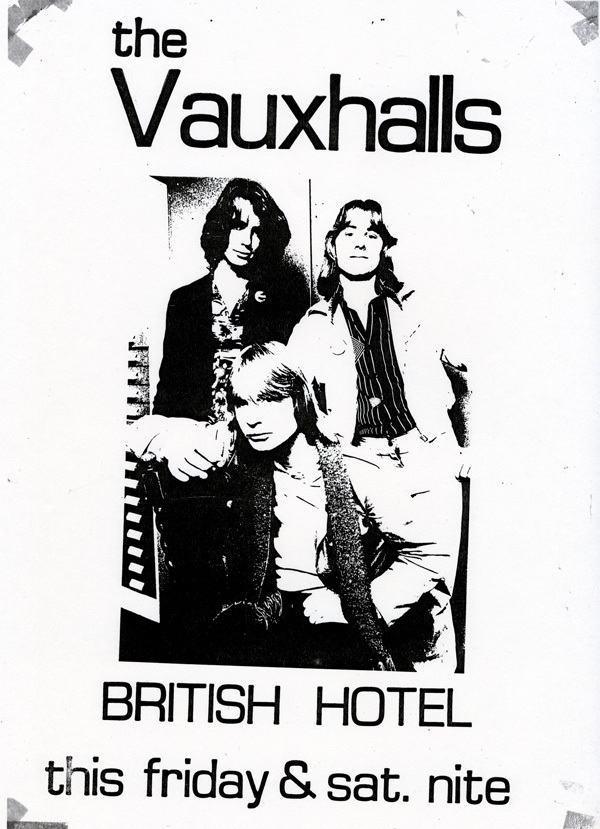
Archbold: “It was the weekend the hot rod show was in town, so the hot rod boys were in town and the Road Knights were in town. The word was out that if one lot was in a bar and the other lot turned up there was going to be a brawl. Only three people turned up, and they told us to turn it down. After the show one night we ended up at the Road Knights HQ. There was a guy behind the bar with a handgun. We wondered what the hell we were doing there.”
The Vauxhalls were in Wellington in mid-August 1979 to play The Last Resort and Willy’s Wine Bar.
The Vauxhalls were in Wellington in mid-August 1979 to play The Last Resort and Willy’s Wine Bar.
Mark Brooks: “Wellington was a disaster! We got pulled over by the police about a hundred metres from my flat. When they found out we were a punk rock group, they searched our van. That was an omen.
“We played two different bars over a seven-day stretch. The Normals (a Wellington punk group featuring future Johnnys bassist Graham Hood) came to see us nearly every night. We had no support and had to play all our songs then come back and play a sort of greatest hits set at the end. Which is one of the cons of having a whole lot of songs that only lasted around two minutes each.
“Willy’s was grim. We had to share the evening with a single mum’s disco called Dirty Dicks! They tried to fire us after two nights, but Phil stood his ground and made the manageress cry! We got to stay for the rest of the booking. God knows why we wanted to.”
Phil Brennan: “As soon as The Vauxhalls finished their set the DJ would loudly play Kiss’ ‘I Was Made For Loving You’ so Mark and I nicked all his fuses out of the PA. There were dismal attendances. Bruno Lawrence came up and drummed two or three times totally pissed. After one show we went to The Normals’ practice room which was covered in silver tin foil.”
Mark Brooks: “The Normals couldn’t get into Willy’s as there was a no jeans no sandshoes door policy. I remember going to a party at The Normals HQ and later that evening Martin and I nearly choked to death when our sleeping bags caught fire while we slept.”
Still a popular and busy act with regular spots at Brennan’s suburban New Wave Raves in September 1979, The Vauxhalls progressed to the larger Hillsborough in December before becoming regulars there in early 1980. The Gladstone still loved them, as attendance at shows with The Swingers, Vacuum, and Pop Mechanix demonstrated.
The Vauxhalls picked up two prime international support slots for The Police in late February 1980 and The Boomtown Rats in May 1980.
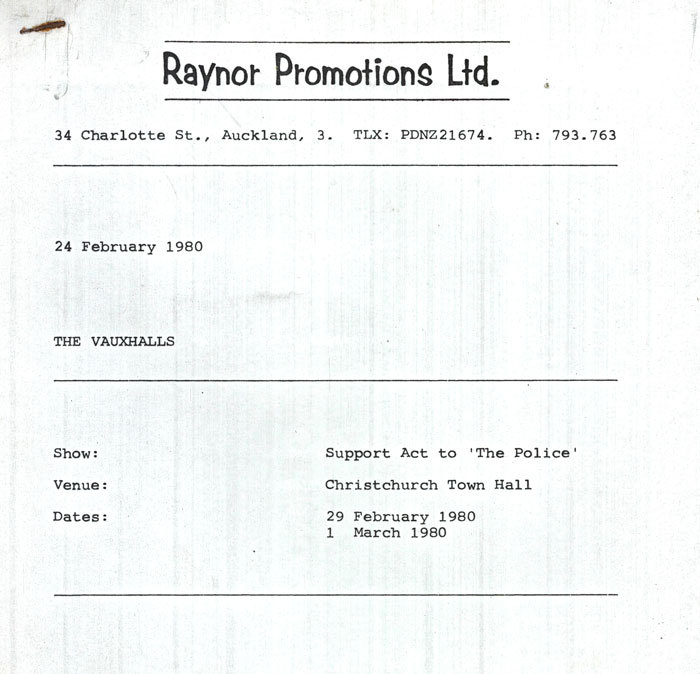
Mark Brooks: “The first night supporting The Police was awesome. A bit like bungee jumping but in front of thousands of people. Phil scored us the two-night stint opening for The Police, who at that stage were probably the hottest band in the world. It was another huge leap for original music as all international supports went to the slickest cover band in town. Phil had managed to get us in under the wire somehow! God knows how!
“I remember (local promoter) Jim Wilson hanging in our dressing room and telling us how badly we were going to go down when we walked out on stage. He kept asking us not to play our own songs as the audience only wanted to hear covers of other people’s songs.
“We started hooking into the whisky to quell our nerves and listened to more of Jim’s grim words. When we were standing at the edge of the stage and the lights were going down I felt like I was about to be executed, but I was so drunk, I could hardly stand up. I was so psyched up by Jim’s speech, I was waiting for the jeers and stuff being chucked, but when the tour manager announced us, the crowd went nuts. Rows of seats were destroyed and I think we played pretty well. We won!
“The Rats gig was our last ever show as Scott was quitting to ultimately move to Sydney with his girlfriend. The Boomtown Rats were about the nicest people in rock! There was absolutely no star crap. We shared their beer and catering and they copped our ultra-fast cover of The Surfaris’ ‘Wipeout’ for their show. Johnny Fingers and some of the other guys stood at the side of the stage rocking out while we played. We were mobbed by screaming girls outside afterwards!”
Scott Brooks didn’t play on the group’s belated recordings, a quartet of decidedly non-punk rock songs. ‘Going To The Movies’, ‘Heartbeat’, ‘Teenagers From Outer Space’ and ‘B-Girls’ were recorded at the Garden City’s Creative Sound Studio in late 1980. Mark Brooks played bass and guitar and sang with Archbold drumming. The majority of the songs were the flanged Velvets pop-rock style that The Newtones would soon perfect. The only example of The Vauxhalls’ energetic rock and roll was ‘Teenager From Outer Space’ which includes a wild fuzz lead break and neat angst-driven lyrics.
After a northern excursion to Wellington’s Last Resort in May 1980, Al Park left in June for the rock and roll heartland of the United States. It was all over for Vapour and the Trails. They left only one song on a Radio Avon rock compilation, a funkier version of ‘Never Wanna Lose Your Love’, which they’d recorded earlier with Arnie Van Bussell at Nightshift Studios.
“I went through a rock star trip in Christchurch with women, drugs, playing every week and making lots of money,” says Park. “I didn’t realise what I was really onto. The Gladstone was as good as the Marquee. I couldn’t imagine rock and roll being any better.”
-
The 1978 Eyewitness punk documentary. The Doomed feature from three minutes in.